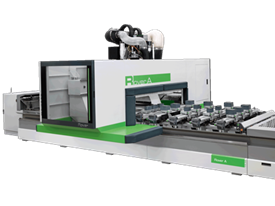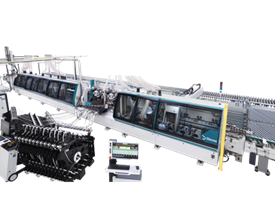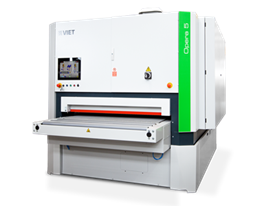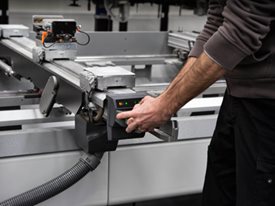The use of computers and robotics in manufacturing processes has significantly changed how things are created in recent years. Modern robot applications in manufacturing have enhanced the industry as a whole, not only in terms of efficiency and productivity gains.
From large, constrained devices to complex systems, robots have undergone significant evolution. Robots with this degree of intelligence may manage complex jobs and make real time modifications in reaction to production fluctuations. Robots will likely become much more versatile and capable of carrying out complicated activities in a variety of production environments as technology advances.
We will explore further the manufacturing applications of cutting edge robots in this blog post. Understanding the possibilities and advantages of robot use in manufacturing allows us to comprehend how this technology is influencing the industry's future and assisting companies in staying competitive in a constantly changing global market.
Advancements in Robot Application
In recent years, there have been significant developments in the area of robot applications in manufacturing. Robots may now easily complete complicated processes rather than being restricted to basic, repetitive chores. Let's look at some innovative robot uses in the industry:
- Collaborative Robots: These Robots are created to collaborate with people and help them with a variety of activities. These robots can interact securely with people because of their sophisticated vision and sensing systems. In assembly lines, where they can execute delicate and complex tasks while maintaining the safety of human employees, cobots are especially useful.
- Autonomous Mobile Robots: AMRs are autonomous, mobile robots that may freely roam about a factory. These robots can move through changeable situations without the need to change the physical infrastructure since they are outfitted with sensors and mapping technology. AMRs are often used to manage logistics, inventory, and material flow, enhancing the effectiveness of the manufacturing process.
- Machine Learning and AI: Robot intelligence has increased as a result of the integration of artificial intelligence and machine learning. Robots that can learn and adjust to changing circumstances thanks to these technologies are very adaptable and effective. Robots can now analyze vast databases and make defensible judgements, which increases process optimization and preventative maintenance.
- Vision Guided Robotics: Advanced imaging technologies are used by vision-guided robots to help them observe and comprehend their environment. These robots are capable of detecting and analyzing visual data, which enables them to carry out jobs precisely. Robots with vision guidance are used in many industrial operations, including quality control, item identification, and assembly verification.
- Robotic 3D Printing: By making it possible to produce intricate and specialized components, 3D printing has completely changed the industrial sector. Robotic 3D printing combines robotics with additive manufacturing, enabling the precise fabrication of complex designs. These robots can construct structures layer by layer, creating new opportunities for small batch manufacturing and quick prototyping.
- Human-Robot Collaboration and Safety: Collaboration and safety between people and robots in production contexts have been the main goals of developments in robot applications. Humans and robots may now successfully coexist in the workplace. This partnership not only improves productivity but also offers ergonomic advantages and lowers the possibility of working accidents.
Robotics and Computer-Integrated Manufacturing
Although robotics and computer-integrated manufacturing (CIM) concepts are not new, current developments in robotic technology have elevated them to new levels. Robotics and automation technologies are seamlessly incorporated into the production process, which is referred to as CIM. Robotics may help firms operate with more accuracy, speed, and dependability, which improves product quality and lowers production costs.
The use of robots in the industry is expanding as more companies get to know the potential of this technology. These programs revolutionize conventional production procedures by including a broad variety of duties and procedures. Robots can now accomplish complicated tasks with unmatched precision; they are no longer known for only basic assembly line work. Instead, they have developed into intelligent, adaptable machines.
Automating repetitive operations is one of the main benefits of robot use in production. Robots are excellent at doing repetitive, labor-intensive activities like picking and placing items, packing, and material handling. Due to robots' ability to work relentlessly and consistently without getting tired or making mistakes, manufacturers may dramatically boost production and efficiency by automating these procedures.
The use of robot applications in manufacturing also solves security issues. Manufacturers may protect their employees from hazardous situations by using robots for risky activities or operating in environments with possible dangers. Robots are made to handle extreme temperatures, hazardous chemicals, and other dangerous materials, reducing the possibility of mishaps and harm to human employees.
Conclusion
As robotics continue to advance quickly and with incredible capability, they will have a significant impact on the industrial sector in the future. These technologies might be used to help businesses stay ahead of the competition. Robot applications in manufacturing provide a plethora of possibilities and assist businesses in expanding the bounds of productivity and innovation.
In conclusion, robotics and computer-integrated manufacturing are revolutionizing the production industry. It offers several fantastic advantages, like increased production and better product quality. For manufacturers to fully use cutting-edge robot applications in the fast-paced industrial sector, they must accept these advancements as we go forward.



.png)





 Worldwide
Worldwide
 Italia
Italia
 United Kingdom
United Kingdom
 Россия
Россия
 France
France
 中国
中国
 Asia
Asia
 Deutschland
Deutschland
 España
España
 Schweiz
Schweiz
 North America
North America
 India
India
 Australia & New Zealand
Australia & New Zealand
 Türkiye Cumhuriyeti
Türkiye Cumhuriyeti
 Middle East
Middle East
 Brasil
Brasil